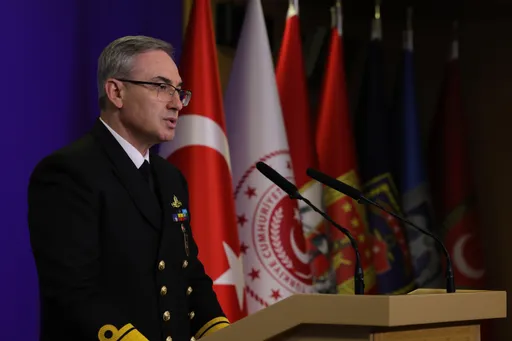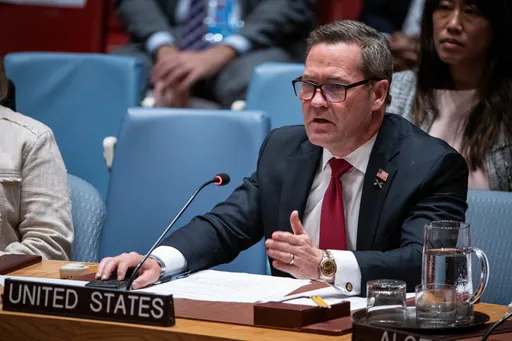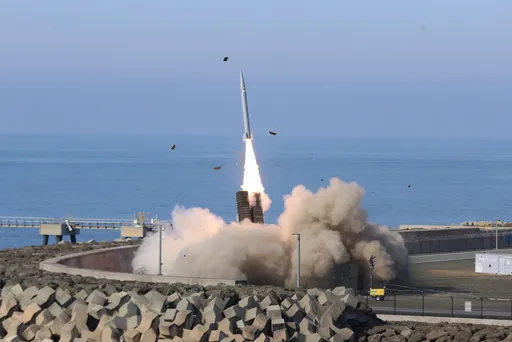ETA's Struggle for National Liberation: No Freedom, Then Fear Us
For over 50 years ETA has been at the front-page of almost every news outlet in Spain.
The headlines persistently denounced bloody terrorist attacks, unsuccessful negotiation attempts with the central government and a strongly-felt economic and social crisis in the Basque country.
Following half a century of armed struggle for independence, why lay down arms now? To say ETA has failed undermines the ideological legacy of their fight for independence; but to say that ETA has failed militarily, is indeed what many had predicted before they announced a permanent ceasefire in January 2011. ETA is designated as a terrorist organisation by Spain, France, the UK, the US, and the European Union.
ETA's acronym stands for Euskadi Ta Askatasuna "Basque Homeland and Freedom" and was established as a revolutionary national movement in 1968 to unify the North East of Spain and the South West of France. Regions that visibly share a distinct language and cultural identity that is unique and, interestingly enough, untraceable to anthropologists around the world.
Spain is divided into what is known as Autonomous Communities that grant various regions limited autonomy; for example, they have a different police body or sovereignty over their financial expenditure. Separatists are not only driven because they yearn to preserve their language and culture, but also the revenues produced by the Basques goes to the capital – where the art of hiding corruption is a national sport in Spanish politics.
The Basque Liberation movement is also intrinsically an anti-colonial movement concerned with preserving local traditions against cultural imperialism. As such ETA is a movement largely supported by farmers, priests, students and the working class in general. The armed group has also been linked to other organizations labelled as terrorist by the international community such as La FARC, Hamas, the IRA and the PLO. As one undercover journalist discovered in his investigations "they regard themselves as brothers, as comrades".
The militant group and their supporters were freedom-fighters and reached their peak of popularity under Franco's dictatorship as they inspired and symbolized broad-spectrum resistance against the regimes violence and oppression across Spain. However, the violence of the regime only birthed more violence in the pursuit of independence.
Violence in the Basque region should not be entirely attributed to the group since the central government was responsible for plunging the region into more violence after they sponsored a death squad known as the GAL during the 80's – the most violent period since ETA's inception. The GAL was assembled to target ETA members but many civilians were killed even though they had no proven affiliation to ETA.
New Era, New Politics
Historically, Euskadi or the Basque Country had a very different aura, you could feel the discomfort on people's faces as soon as you mentioned ETA in public spaces – it was a very sensitive subject regardless of which side you were on.
The post-Franco period in Spain is famously referred to as "La Transicion", the transition to democracy, and is key in understanding why ETA split physically and ideologically.
In this new era for Spain, the doors to democracy were slowly opening ways to new political expressions and ETA no longer had the basis to pursue independence through violence. As such ETA divided into "ETA military" and "ETA political", those who wanted to continue the armed struggle and those who believed in the democratic way. "ETA political" manifested in the political party, Herri Batasuna, which was officially formed in 1986.
During the mid-80s and 90s the debate across Spain was whether to legitimize the party since they never publically condemned ETA's violence. If they had done so it would have implied that their use of violence was a mistake and hence all the lives lost were in vain.
There was widespread support for the party which was in fact a coalition of several far-left groups. The support of the general public towards ETA's political wing was indicated through Euskadi flags hanging in balconies, weekly protests on Thursdays to demand the party's legalization, and unlike the rest of Spain – showing a Spanish flag in public had very strong connotations and was associated with fascism.
Herri Batasuna was navigating a political avenue to negotiate independence and the central government made matters worse for the Basques and the Spaniards by assembling a state-sponsored terrorist group, the GAL that targeted members of ETA and thus plunged the region into more violence. Parallel to this, Spanish authorities outlawed the party and shut down their efforts to proceed in a peaceful and democratic way.
The region was frustrated with the political blockade Madrid had enforced. Parallel to GAL's violence and the banning of the party, the Spanish government refused to negotiate with "ETA military" and "ETA political" on the basis that they would "not sit down and negotiate with terrorists".
Unlike the Catalans, the Basque people have witnessed a recurring use of violence with 829 people killed in 43 years. Today, however, the atmosphere is very different, tourism and business are at their peak and the city of San Sebastian was chosen as the cultural European Capital of the year in 2016.
France Enters the Stage
When the French and Spanish governments reached an agreement to merge intelligence and police forces in the mid-90s, ETA was immediately fragmented and weakened. Prior to this France was considered a "haven" for the militant group.
The results of the cooperation were visible; victims of ETA's attacks had gone from 540 people during the 80s and mid-90s, to a total of 82 killed since the agreement up to their last attack in March 2010.
Every week top leaders were captured, sentenced and imprisoned in separate regions far from the Basque Country and many of them went into exile. From then onwards the streets of Euskadi witnessed mass protests organised by EH Batasuna to pressure the central government to bring back prisoners who were separated from their families. Up to this day if you visit the Basque Country you will notice flags hanging and graffiti tags everywhere that read Euskal Presoak, Euskal Herrira – Basque Prisoners to the Basque Homeland.
At this point it was clear that ETA had been dismantled, irrevocably fragmented, and lacked the public support for a means to their ends.
The Ashes of ETA
When asking a local about the disarmament she affirms that "it was about time, Euskadi should have been booming like this 30 years ago". The climate of economic and political instability clearly narrowed the support for ETA's military wing and as pointed out by the ex-president of the Basque National Party, Joseba Arregui, "ETA put the break on Basque pro-independence aspirations."
Today, the classic scribbles of Gora ETA – Long live ETA - across the Basque landscape are just echoes of a past that locals want to leave behind. ETA military has failed not only because of the unprecedented crackdown on the group, but also due to the lack of hope in the use of violence to achieve independence. Nevertheless, the conviction that drove the group's armed struggle has prevailed – as was witnessed through the victory of the separatist political party, Bildu, in the regional 2012 elections.
This surrender comes at a time where the new generation no longer want to discuss independence with their faces covered but rather openly and democratically as exemplified by their fellow separatists in the country, the Catalans.
























